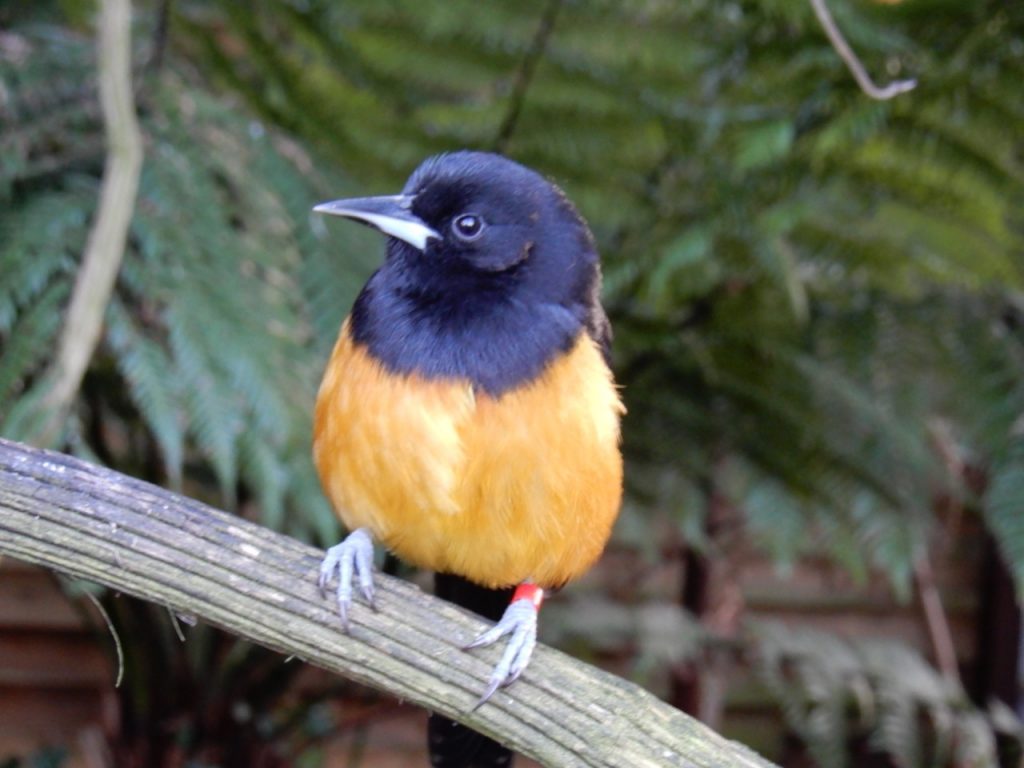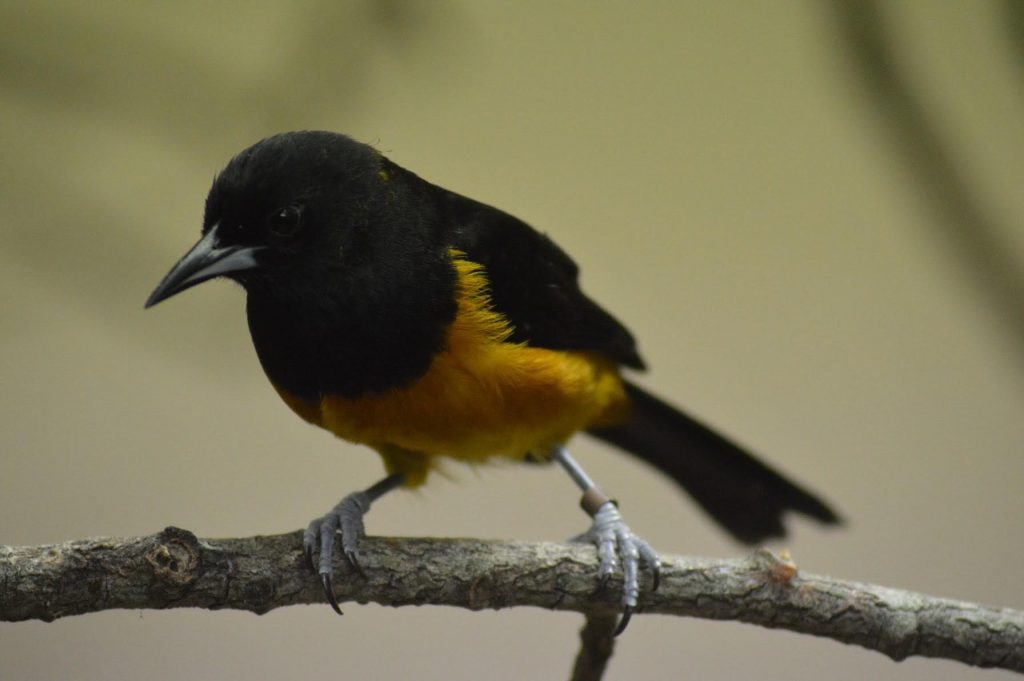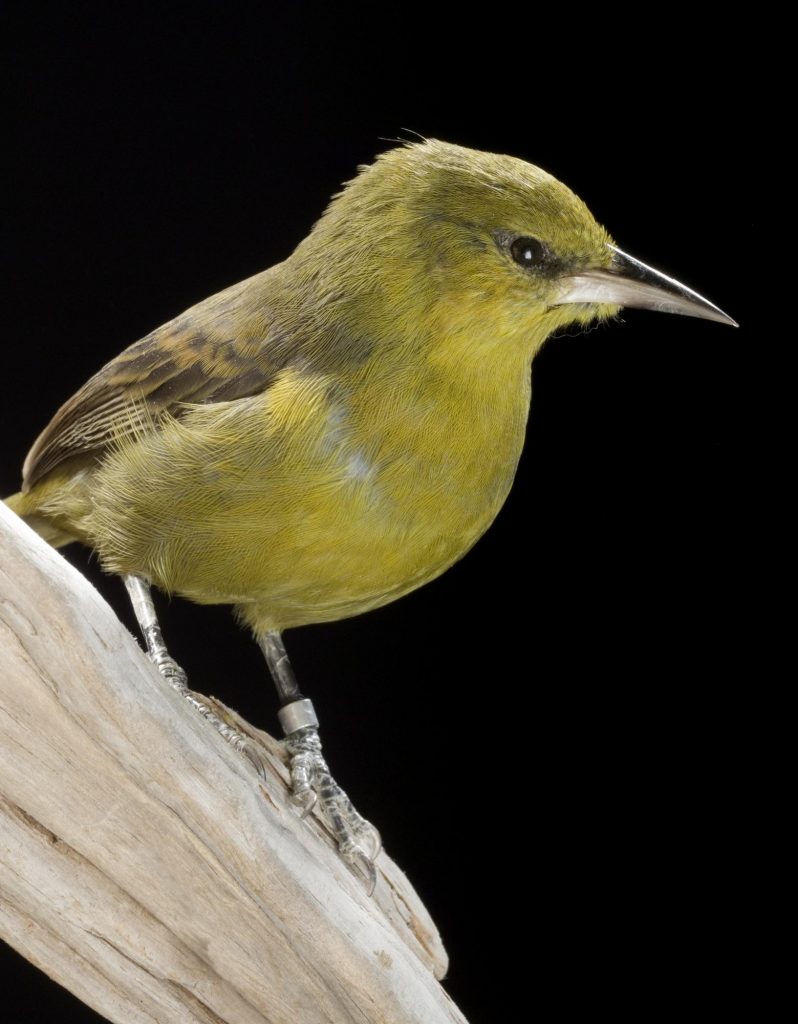The island of Montserrat was not only a famous holiday island for the rich and famous, but it is the home of the Montserrat oriole, Icterus oberi, which is found nowhere else. Montserrat is a tiny island just 10 miles long and seven miles wide in the Caribbean and it is a UK Overseas Territory. In 1995 the dormant Soufrière Hills volcano became active and its eruptions not only destroyed its capital, Plymouth, and drove away two thirds of its human inhabitants, but they also destroyed 50% of its remaining forests. These forests are home to many endemic animals and plants including the critically endangered mountain chicken frog, Leptodactylus fallax, and the Montserrat oriole, which is Montserrat’s national bird. The loss of forests and impacts of the volcano reduced the oriole population by half.

When we opened our Survival gallery in 2011, we warned that this colourful bird could become extinct by 2020, if the destruction of habitat by the volcano continued. We are delighted that we were wrong and the Montserrat oriole’s population has now partly recovered and stabilised.
Not only has the volcano been relatively quiet allowing the wildlife to start recovering, but the Durrell Wildlife Conservation Trust collected eight orioles and took them back to Jersey Zoo to establish a captive breeding programme to create an insurance population in case all the wild birds died out.
Today the situation for the Montserrat oriole is looking much better. In surveys there was a 70% increase in the chances of seeing orioles in surveys between 2011 and 2016. The surveys reveal that the population has more-or-less been stable since 2006 with an estimated population of 323 birds in 2016 and a possible maximum of 510. The 2019 survey showed a slight dip in numbers, but confirmed the overall stable population in Montserrat’s forests.

Sadly, other Caribbean orioles are not doing so well and there is particular concern for the St. Lucia oriole, Icterus laudabilis. Hopefully lessons learned from the conservation of its neighbour will help ensure its future survival.
Meanwhile the captive population of Montserrat orioles has continued to increase steadily with around 56 birds in 2020 in several European zoos as part of the breeding programme managed from Jersey Zoo. As well as Jersey Zoo, you can see live Montserrat orioles at Chester Zoo, London Zoo and Birdworld. But remember you can also come and see a beautiful green female from Jersey Zoo in the Survival gallery at the National Museum of Scotland.

